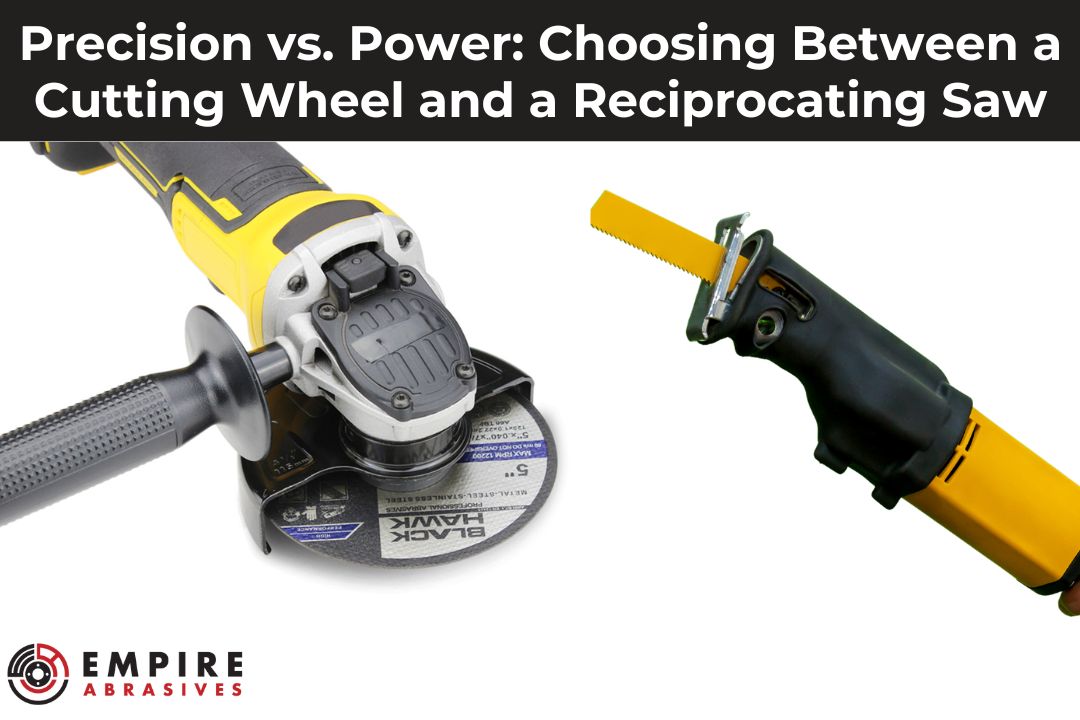
Need to cut through rebar, sheet metal, or a wooden wall…but not sure which tool you should grab? This guide helps you choose between a cutting wheel and a reciprocating saw for the perfect cut, every time.
How Each Tool Works
Cutting wheels are thin, abrasive discs that mount on angle grinders or specialized cutting tools. They work by rotating at high speeds (often 10,000+ RPM) and literally grinding through material with thousands of tiny abrasive particles. Think of each particle as a microscopic cutting edge—when one dulls, the wheel self-sharpens as the bonding agent releases worn particles to expose fresh ones underneath.
Reciprocating saws aka Sawzalls, on the other hand, use a straight push-pull blade motion that mimics hand sawing but at rapid speeds—typically 2,500-3,000 strokes per minute. The saw's motor drives a reciprocating saw blade back and forth through the material, with the cutting action happening on both the forward and backward strokes depending on blade design.
At a Glance Comparison
Cutting Wheel Job Profile
Reciprocating Saw Job Profile
| Feature | Cutting Wheel | Reciprocating Saw |
|---|---|---|
| Primary Job | Precision & Finishing | Demolition & Rough Cuts |
| Finish Quality | Smooth, weld-ready edge | Rough, requires cleanup |
| Key Strength | Accuracy | Raw Power & Versatility |
| Best For Metal? | ✔ Excellent | ✔ Good for rough cuts |
| Best For Wood? | ❌ Not Recommended | ✔ Excellent |
| Best For Tight Spaces? | ❌ Tool body can obstruct | ✔ Blade can reach |
What's Your Task?
Click a job below to see the recommended tool.
Cutting Wheel: The Surgeon
Best for jobs where accuracy, control, and a clean finish are critical. It grinds away material for a smooth, precise edge.
Why this tool?
Select a task above to learn more.
Reciprocating Saw: The Demolition Crew
Your go-to for power, speed, and aggressive cutting. It tears through material, making it ideal for demolition and rough work.
Why this tool?
Select a task above to learn more.

